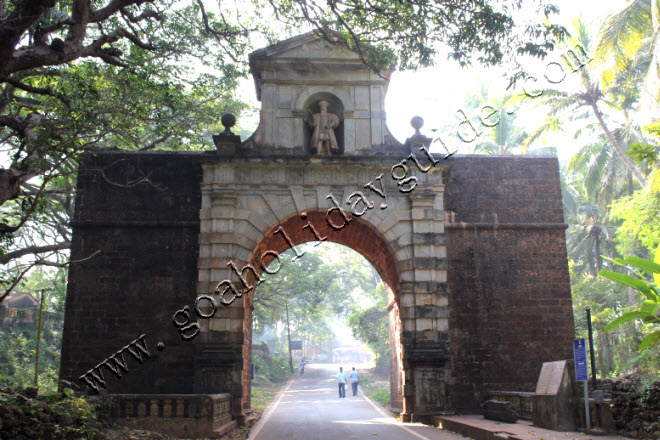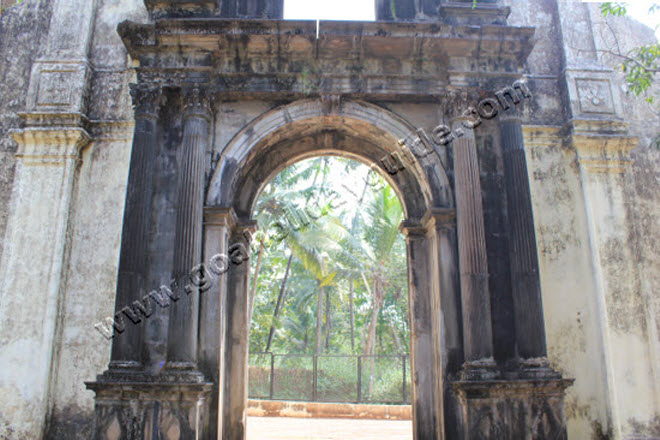Goa Under The Portuguese
Inquisition In Goa
In the year 1560 A.D, the dreaded inquisition was set up in Goa and sent shockwaves through Goan society, as it burnt Christians accused or suspected of maintaining their old customs. Non Christians were deported, whipped and tortured on violation of its
Reforms Introduced By The Portuguese
Albuquerque and his successors left almost untouched the customs and constitutions of the thirty village communities in Goa. Albuquerque did away and forbid with the practice of Sati, or widow burning amongst the Hindus in Goa.He had soldiers marry local women, choosing for this purpose the widows of the slain Muslim troops, and allotted to them land so that they would settle down and be useful to the rulers of the land. These men were known as Casados, literally meaning married gentlemen. They were granted special privileges on that account, but were kept aloof of the rest of Goan society.
Albuquerque founded a hospital with an endowment fund attached to it and established a Municipal council called Senado de Goa, meaning Senate of Goa. In 1515 A.D, Albuquerque was superseded by Lopo Soares de Albergaria as Viceroy, in a sudden development, as he his strategic policies had garnered him enemies. He died soon after and his policies were reversed by his successors leading to much avoidable strife.
In 1570, a grand alliance was formed against the Portuguese by the Adil Shah Of Bijapur, the Nizamshah of Ahmednagar and the Zamorin of Calicut with other princes of the area joining in.
Various Portuguese possessions were simultaneously attacked in an attempt to dislodge them, but were stoutly defended under the overall command of the Portuguese viceroy, D. Luis de Athaide, a heroic achievement indeed, given the enormous odds against them.
Loss Of Portugal's Freedom
In 1510 A.D, ten years after the heroic defense of Portuguese possessions in India, Portugal itself lost its independence to Spain's Kind Philip-II for the want of a heir to its throne. Under these circumstances the overseas possessions of Portugal fell easy prey to the designs of the Dutch and the English.
The Dutch blockades of the sand bar at the mouth of the river Mandovi in Goa, became very frequent during 1636 - 40 in particular, and caused losses to the Portuguese in terms of men and material. The Portuguese also had to defend their territories against the rising might of the Marathas who made frequent incursions into Goan territories in 1660 A.D.
Peace could be established in 1668 - 69 A.D. by which time the Portuguese had lost their prized possession of Ceylon, now Sri Lanka to the Dutch along with many forts and coastal possessions in India. The island of Bombay was ceded to the British as a dowry given at the time of the marriage of Princess Catherine of Braganza & Gusmao to King Charles-II of England in 1661 A.D. Finally the Portuguese territories in India only came down to Goa, Daman and Diu.
Dissemination of Christianity
The view that the religion of the ruler should also be that of the ruled, was dominant in Europe in the 16th century. In accordance with it, the King of Portugal decreed that the norm should be followed for his Portuguese possessions as well. For the purpose of church administration, Goa and the other territories acquired by the Portuguese in the East were included in the diocese of Funchal, a small town situated on the island of Madeira, off the coast of Portugal.
In 1534 A.D. Goa was raised to a bisphoric with an ample spiritual jurisdiction that covered all the lands east of the Cape Of Good Hope. Its first bishop took office in 1538 A.D and an archbishop, twenty years later.
Missionaries, of different orders starting with the Franciscans, then the Jesuits and later the Augustinians, began the work of inducting Goans into the Christian fold in right earnest, by methods persuasive as well as pressure based by demolition of the temples carried out by the owners themselves, on converting to Christianity. Incentives with this regard were always available to the dominant upper castes of the Hindu society, the Brahmins and the Kshatriyas to embrace the new religion which they did on their own in most cases.
In 1542 Jesuit missionary Francis Xavier arrived in Goa at the service of King John III of Portugal. St. Francis Xavier mentions the architectural splendor of the city; but it reached the climax of its prosperity between 1575 and 1625. travelers marveled at Goa Dourada, or Golden Goa, and there was a Portuguese proverb, He who has seen Goa need not see Lisbon.
Around 1583, missionary activity in Cuncolim led first to small skirmishes and finally to the murder of all the missionaries. The Portuguese authorities called the 16 chieftains of each ward. (vado) of the Cuncolim village to the Assolna fort, ostensibly to form a peace pact with the villagers. At the fort, the chieftains were slain, except for two who jumped from the fort into the Arabian sea and presumably swam to Karwar. The villagers were left without their traditional leaders and the Portuguese began confiscating the land of the locals and set up the Goa Inquisition. Many churches were built during this time which do stand tall in all their glory and splendor even today. The distinct Portuguese names that many Christian Goans bear till date are a relic of the time when natives were forced to adopt a Portuguese name at the time of conversion.

